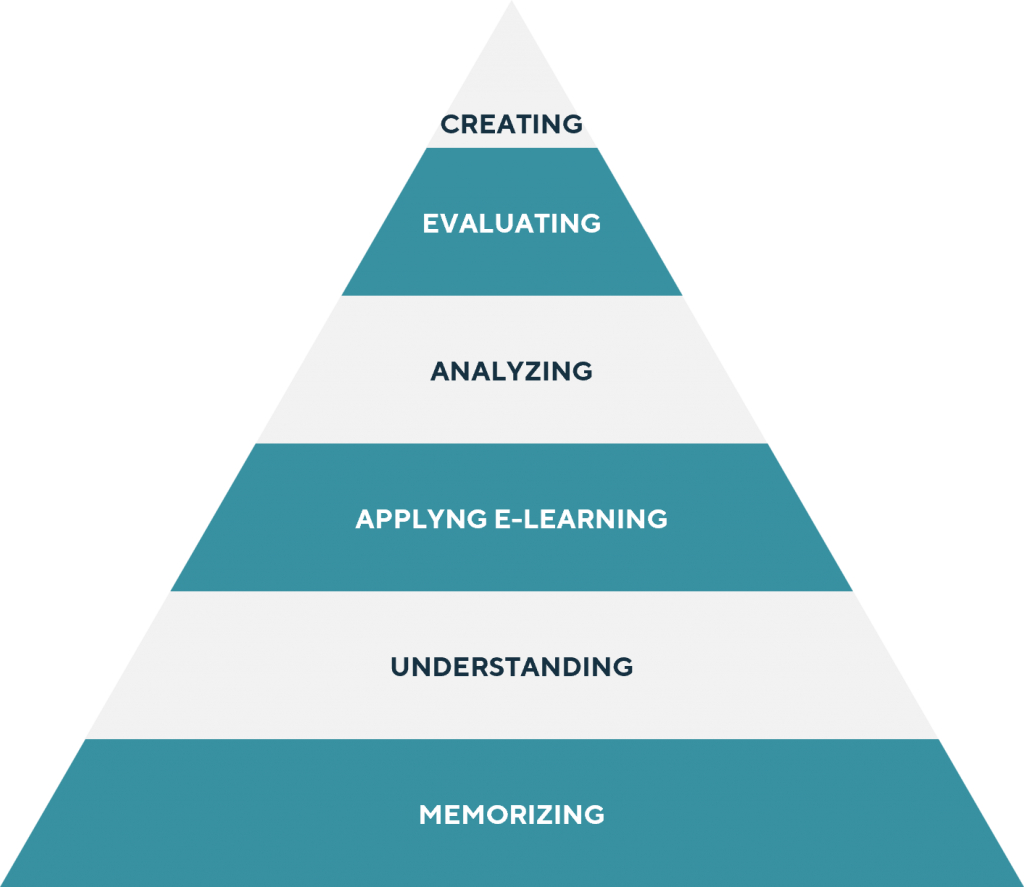
How target analysis is the first step in designing a successful training program
Designing a training program is not always easy, it takes time and resources. But before you start you need to ask the simple question: “What will the learner have to acquire as a result of training”? Analyzing objectives is a crucial element in defining everything else. Knowing what you wish to achieve, what skills you need to acquire, and what depth of knowledge you wish to convey to your employees is by far the most important step to proceeding effectively and intelligently.
ADDIE Method and the structure of a training program
The ADDIE model1, born in the 1970s and still one of the most famous development models in the field of instructional design, also starts with the same assumption: the assessment stage (or analysis of the objectives) is absolutely the first step in designing a training process.

Assessment, Design, Development, Implementation and Evaluation are the five steps described by the model in creating a training project. The first stage, assessment, clarifies how important it is to analyze the context even before thinking about any content or strategy. Comparing the current situation with the desired one helps to decide which objectives are to be reached, but also gives a clear idea of which skill gaps will have to be filled in order to achieve that change.
Questions to be asked might include: What’s the reason for this training? Why do participants need this training? What is the participants’ current proficiency level and what is the desired one? More detailed questions might be: “How will training help professionals achieve corporate business objectives? What are the methods and formats?” These will serve as a cue to design a training program that meets the needs of participants and broader business purposes.
The importance of objectives
The learning objectives represent everything the participant will be, do, or become once the learning path or activity is completed. They are usually clear, simple and focused on the learner, but above all are always specific and measurable. An initial purpose cannot offer vague or general assumptions but must always indicate the objective to be reached. So how can we define these objectives that are so important for our professional training program? A model widely used in school and academic teaching is that of Benjamin Bloom2, a famous American psychologist who, in the 1950s, formalized and classified the various learning objectives in his “Bloom’s taxonomy”. This approach also began to spread in corporate business contexts with incredible effectiveness.
Bloom’s taxonomy in the corporate training program
In Bloom’s taxonomy there are six pyramid levels – intellectual skill levels that the learner must achieve, starting from the simplest goal (memorizing) to the most complex one (knowing how to create). There are further median objectives such as ability to understand, apply, analyze and evaluate the concepts learned in the specific training activity.

As far as a training program designed for a business team with the macro-objective of increasing sales, here’s a real example of how the 6 pyramid levels can help establish the goals to be reached, also examining at what exact moment participants will be able to pass each level. For a training course on planning sales activities, our objectives could be organized as follows:
- Level 1: Memorizing. At the end of the introductory chapter of the learning path, participants will have memorized how to access tools to plan a sales activity.
- Level 2: Understanding. After completing the first e-learning module, participants will be able to understand the key elements and best practices for planning the sales activity.
- Level 3: Applying e-learning. After the classroom training session participants will be able to apply the sales planning principles and organize daily tasks.
- Level 4: Analyzing. After the e-learning module, participants will be able to analyze and compare data on customers and sales activities.
- Level 5: Evaluating. At the end of the coaching session, participants will be able to evaluate existing data on sales activities with their customers and identify areas for improvement.
- Level 6: Creating. As an overall result of the training program participants will be able to create and implement strategic sales activity plans for all their customers.
In this example, objectives built on top of each other have been observed within the same training program, but obviously we could have multiple objectives that stimulate different behaviors module by module.
The training program evolves
Whatever the purpose and however the overall training program is structured, never forget to detail the objectives and dedicate the time necessary to elaborate upon them at an early stage. Once the answer to “what will participants be able to do as a result of the training program?” is clear, you can easily start with the next steps in organizing a successful training activity.
References
1 Centre for Educational Technology (1975). ADDIE Model: Instructional Design. Florida State University ADDIE Model: Instructional Design – Educational Technology
2 B. Bloom, M. Englehart, E. Furst, W. Hill and D. Krathwohl (1956). Taxonomy of Educational Objectives. Bloom’s Taxonomy | Center for Teaching | Vanderbilt University


